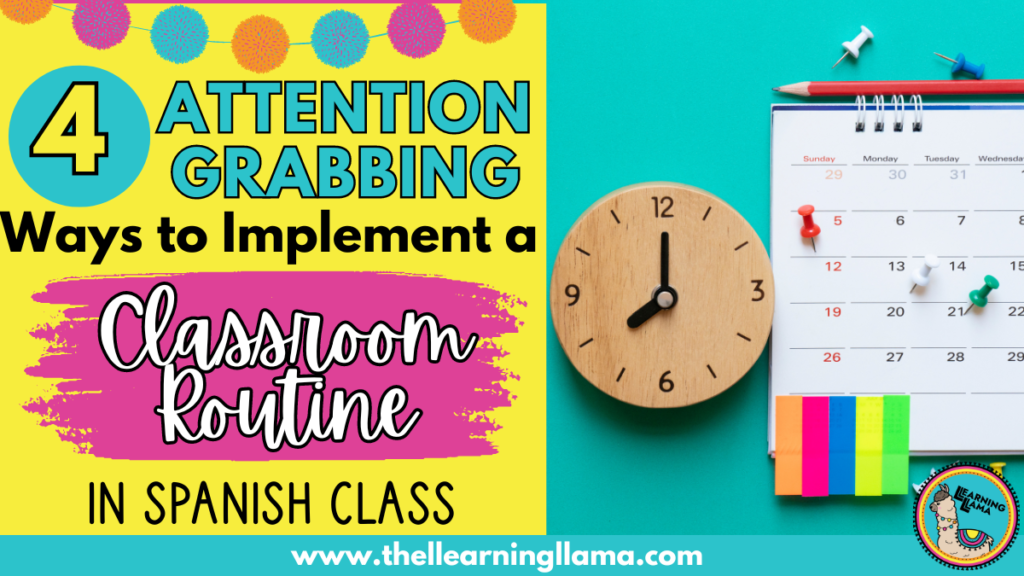Having a classroom routine can be life changing. It makes your lesson go smoother, cut down on classroom management issues, and even looks great during an unannounced observation! But the challenge with a classroom routine is making it exciting enough to grab your students’ attention day after day.
I am sharing 4 attention grabbing ideas to implement a routine in Spanish class. Each of these ideas is unique, keeps students in the target language, and promotes a sense of classroom culture. And the best part, there are 3 FREEBIES listed below to get you started on your classroom routine! So, try them out and see which fits best in your classroom!
No matter which classroom routine (or multiple routines) you choose to do, there are a few tips I have to make it successful. Check out these tips and then keep reading for my 4 favorite activities to use to start a routine!
Tips for a Successful Classroom Routine
Be consistent
Classroom routines will not work without consistency. You cannot implement a routine for one week, then forget about it, and then try to get your students back on track easily. It takes effort on your part to keep them in the routine. Once it is solidified, it requires less effort on your part and becomes second nature.
If you choose to always start class with a bellringer, then make sure you do it everyday. Maybe you also have an exit ticket. If you teach on a block schedule, having both a bellringer and exit ticket can help structure the 90-minute class and fill down time if your lesson plan ends a bit early! Maybe your routine comes in the form of a brain break in the middle of a lesson?
Students should (and will eventually) EXPECT the routine. They will be looking for it on the screen when they enter the room. They will get their exit ticket notebook out as the last few minutes of class approach… and that is what you want for a consistent, well-developed routine!
Keep students accountable
Simply having a classroom routine is not enough. If students are not participating in the routine and being held accountable for their responses or participation, then it is not really worth it. One of my favorite ways to hold students accountable for Bell Ringers and Exit Tickets is with a daily notebook or worksheet. You can require students to each bring their own notebook and then you have the freedom to pose any question each day.
Another option is to have an interactive notebook, like the ones from the National Days calendar or November Gratitude Journals. You could also have a weekly worksheet like the Daily Country Facts worksheet where students complete the worksheet by the end of the week, summarizing what they learned.
Be sure to collect the notebooks or worksheets either at the end of the week, end of the marking period, or as a surprise check whenever you feel like it!
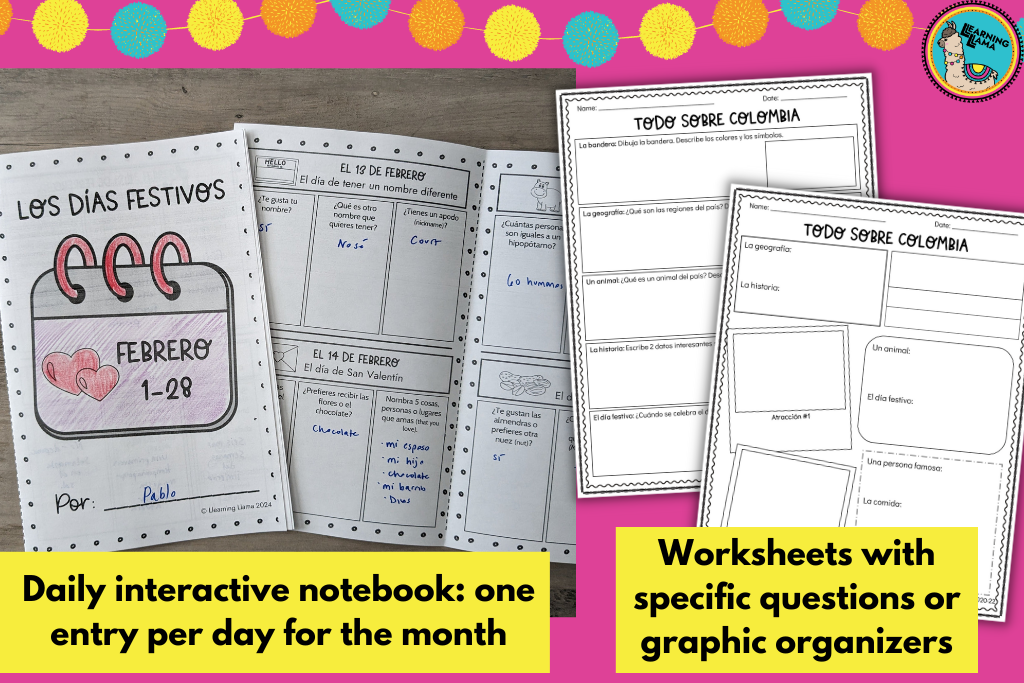
4 Attention Grabbing Classroom Routines
#1 Social Emotional Learning Images
On a scale of 1-9, which dog are you feeling like today? I’m pretty much always number 6! Images just like this are the perfect way to start a fun routine in your class while you get a gauge on your students’ emotions for the day.
Present the emotional check-in image on your screen and as students enter the classroom, they will begin thinking about how they are feeling that day. They can turn/talk, write in a journal, do a gallery walk, or other options! Learn more about using social emotion images in your daily routines here.
And you can grab a set of 26 SEL images for your classroom in English and Spanish here. These images will provide great conversation starters and help you get to know your students better.
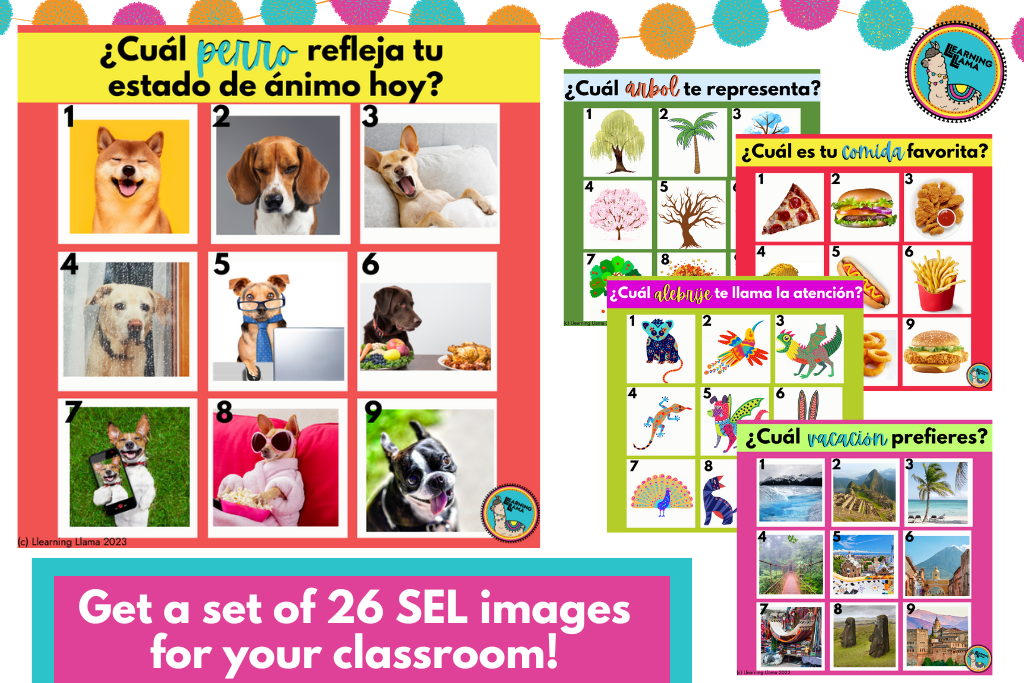
#2 Daily Country Facts
Imagine if you could share 1 fact a day about a Spanish-speaking country with your students. That is 180 fun facts they would learn in one school year! The culture that they would soak up would be incredible! Every day, you can share one fun fact, and as students read the fact, they complete a worksheet answering a simple question or fill out a country profile sheet. By the end of the year, they will know something about each Spanish-speaking country!
If daily facts are too much for you, you can still implement a fact routine in another way. It could be in the form of a weekly question, bulletin board, a weekly student research presentation, etc. Learn more about the many options for using daily facts on my blog post here.
Give daily country facts a try for FREE with an English or Spanish version of 10 fun facts. If you enjoy these facts, then you can check out my store for all 21 Spanish-speaking countries or get a huge money saving bundle for South America, Central America, or all 21 countries.

#3 National Days Calendar
Did you know that you can celebrate national days everyday? Did you know that November 5 is National Donut Day? Or that March 31 is National Crayon Day? And on August 31 you can celebrate National Eat Outside Day?
I think this is the most fun way to incorporate a routine in Spanish class. Every day is a holiday! Use calendar talk to start your class by leading them in a quick discussion about the date, weather, and even today’s national holiday! Learn how to use National Days Calendars with your students on my blog post.
Try it out for FREE with the ENTIRE month of September in English or Spanish. Then, once you and your students fall in love with this routine, grab the entire year-long bundle for one low price in English or Spanish.
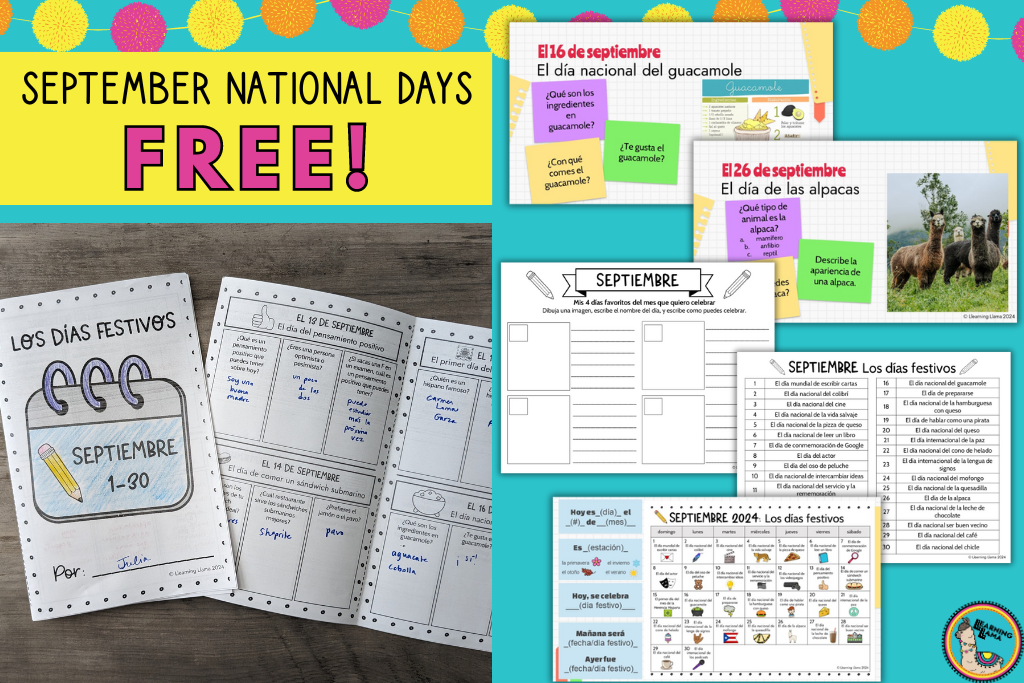
#4 Free Voluntary Reading
Implementing Free Voluntary Reading in your classroom routine can help foster a love for reading and stronger interpretive skills. You could use FVR the first or last 5-10 minutes of class, as a brain break, after assessments, or once a week for 15 minutes. But going back to one of my tips for establishing a routine – hold students accountable!
You may be thinking… well if I let my high schoolers sit and “read” in Spanish for 10 minutes, most would sit there silently, not reading, maybe looking at pictures, or sneaking out their phone. But this does not need to be the case. First of all, if your classroom library is stocked with a variety of text types, you will hopefully grab the attention of all of your students. Then, each student should fill out an FVR card (grab a FREE set here). They simply fill out a card, giving a summary and their opinion of the text they chose. You can count these as participation points for each week or marking period!
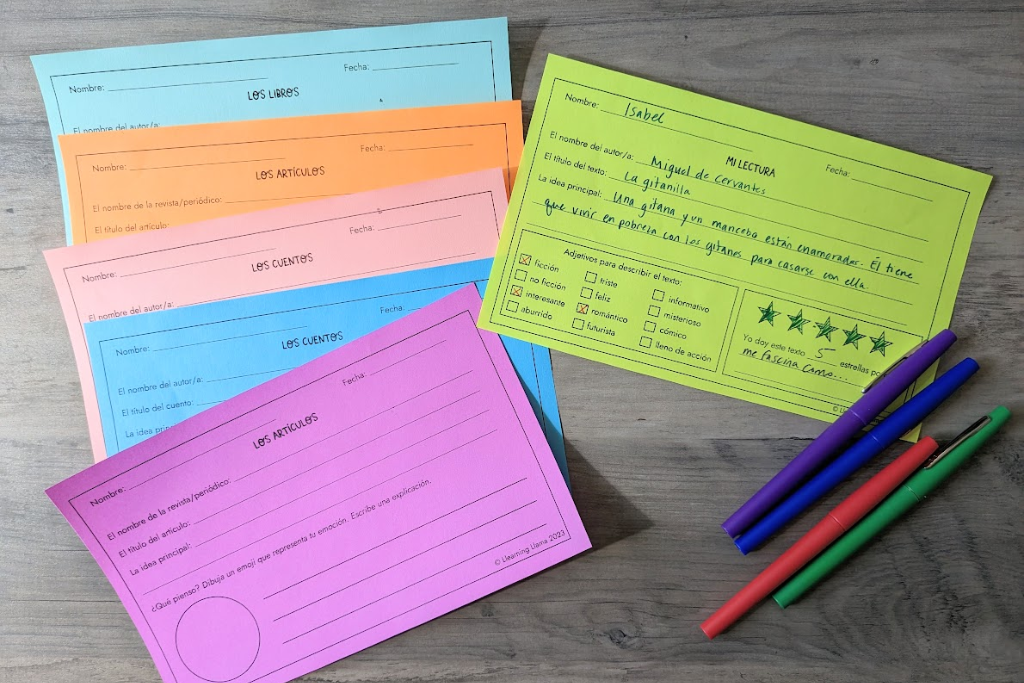
It would be impossible to implement all of these routines into one class. So, now the decision is in your hands. Which routine would fit best with your classroom style? Maybe one works better for Spanish 1 and another for Spanish 3? If you teach on a block schedule, you have more time for developing a routine, so you may choose something that can take up more class time.
There is always the option to keep a routine, but switch up the activity. For example, maybe everyday you do a bellringer. For the month of November, you do a gratitude journal entry. Then in December, you use the National Days calendar, and for January, you switch to the SEL images. This keeps things lively, but still predictable.
No matter which routine you choose, keep it consistent and hold your students accountable!

